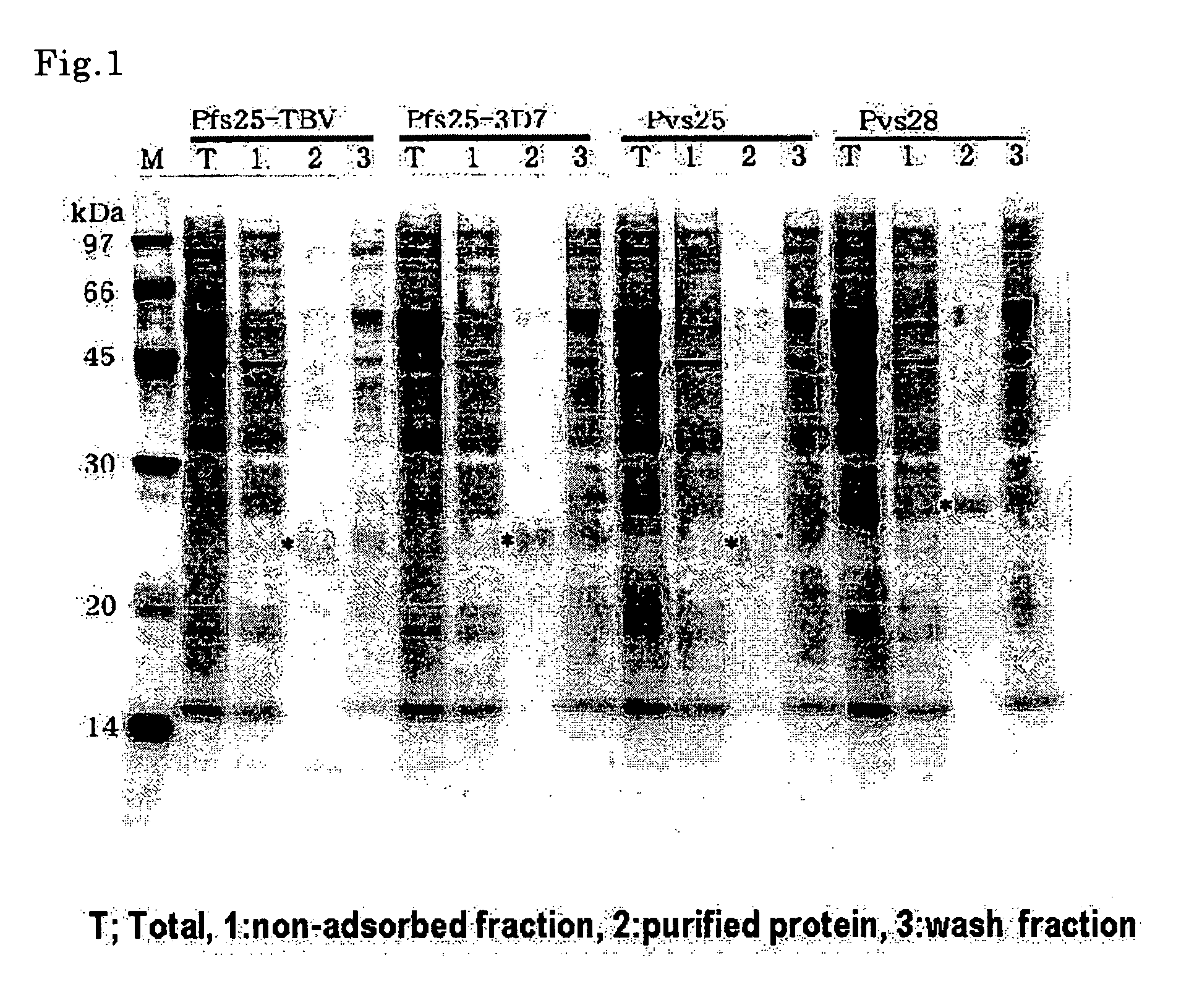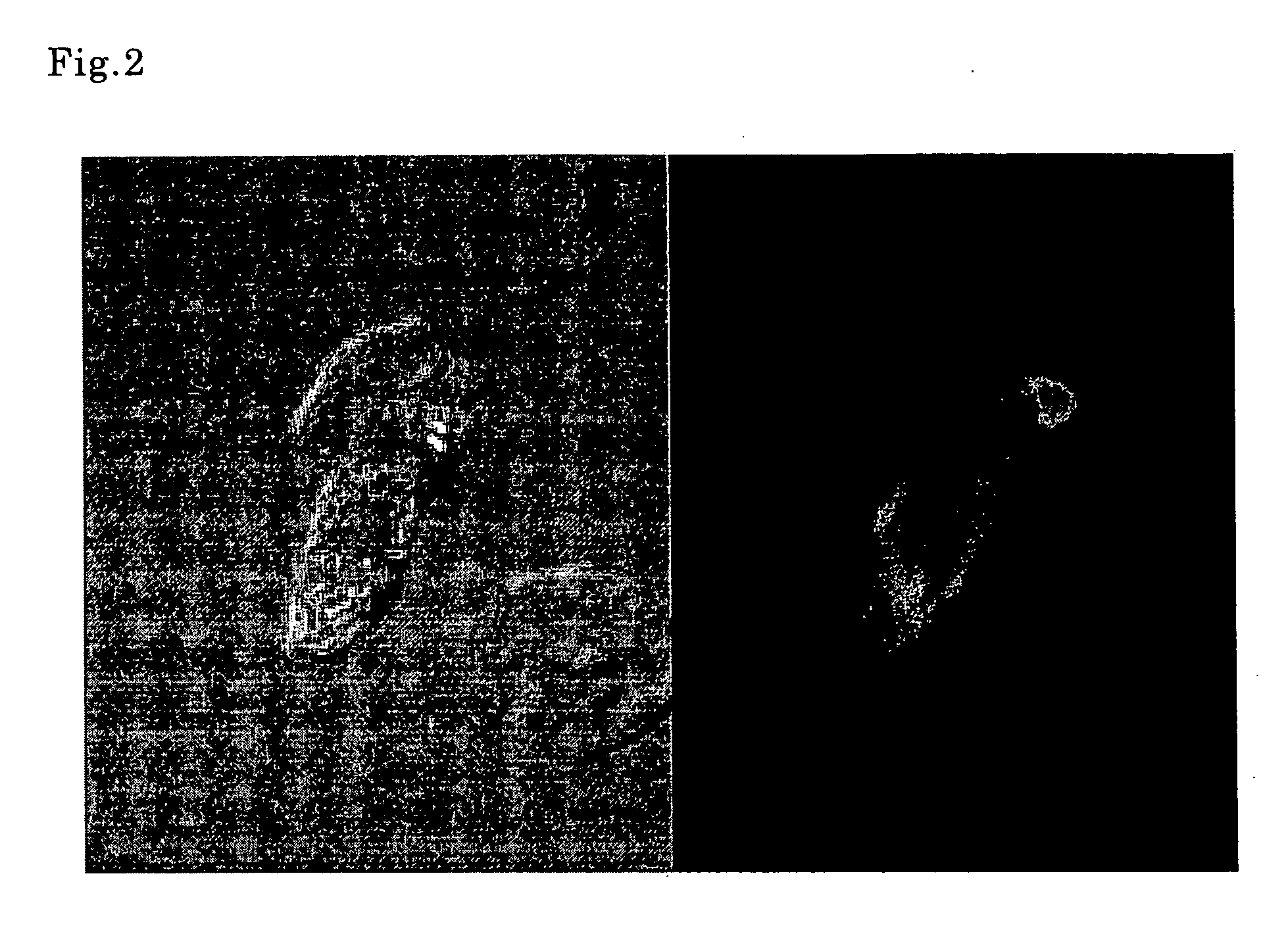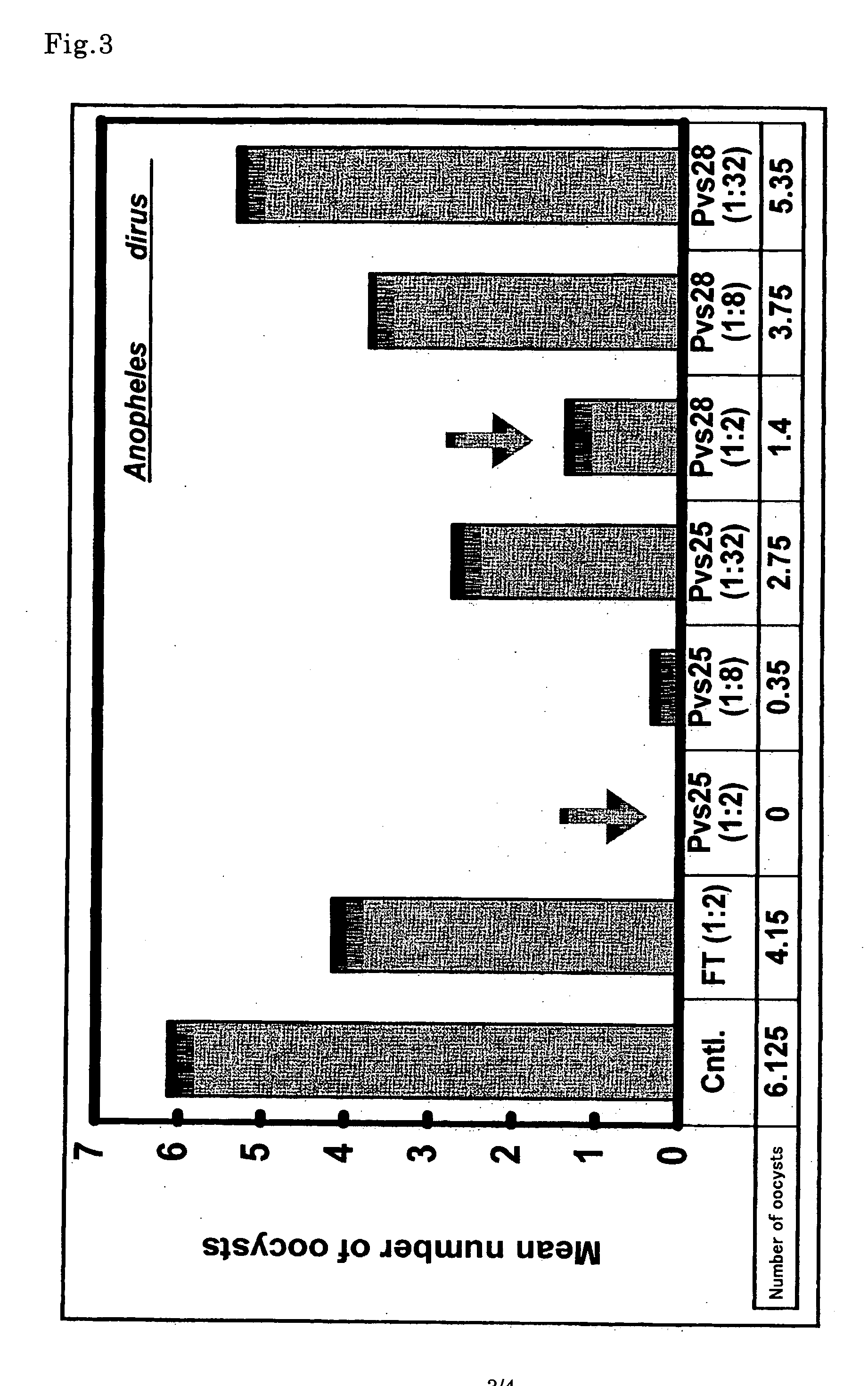Process for producing antigenic substance
a technology of antigen and component, applied in the direction of antibody medical ingredients, instruments, peptides, etc., can solve the problems of not putting a vaccine into practical use, unable to cope with many recombinant proteins, and malaria has become a threat to humankind
- Summary
- Abstract
- Description
- Claims
- Application Information
AI Technical Summary
Benefits of technology
Problems solved by technology
Method used
Image
Examples
example 1
Cell-Free Protein Synthesis
(1) Preparation of Wheat Embryo Extract Solution
[0100] The seeds of Chihoku wheat produced in Hokkaido or those of Chikugoizumi produced in Ehime were fed into a mill (from Fritsch: Rotor Speed Millpulverisette Type 14) at the rate of 100 g / min. and pulverized gently at a speed of 8,000 rpm. After collecting a fraction containing a wheat embryo having germinability by a sieve (sieve opening from 0.7 to 1.00 mm), selection by flotation with the mixture of carbon tetrachloride and cyclohexane (volume ratio; carbon tetrachloride: cyclohexane=2.4:1) was conducted to recover a floating fraction containing a wheat embryo having germinability, then organic solvent medium was dried off at room temperature, and then mixed impurities such as seed coats were removed by blowing at room temperature to obtain a crude wheat embryo fraction.
[0101] Next, using a belt type color sorter, BLM-300K (manufacturer: Anzai Manufacturing Co., Ltd., distributor: Anzai Corporati...
example 2
Confirmation of Expression of Antigen Component
[0115] Pfs25-TBV, Pfs25-3D7, Pvs25 and Pvs28 after the protein synthesis in Example 1 was subjected to purification by His-tag. The obtained samples were subjected to SDS-PAGE using 12.5% polyacrylamide gel under a reductive condition and stained with CBB (FIG. 1). 0.5 μl of a reaction solution for protein synthesis was added to the total lane, and the samples of approximately 3-fold the volume of the solution were added to the other lanes for electrophoresis. As a result, all four kinds of proteins were confirmed to be expressed to have almost aimed molecular sizes (marked * in FIG. 1) by almost same amounts. It should be noted that Pfs25-3D7 which used the original codon of Plasmodium falciparum and had an AT content of 70.2% was confirmed to provide an almost same amount of protein as Pfs25-TBV which was an artificially synthesized gene having an AT content of 58.4%. This result suggests that the present invention is extremely usef...
example 3
Immunostaining of Plasmodium with Blood Serum (Anti-Pvs25 or Anti-Pvs28 Mouse Blood Serum, Anti-Pfs25-3D7 or Anti-Pfs25-TBV Mouse Blood Serum)
[0116] The purified proteins obtained in Examples 1 and 2 were respectively adjusted to have a concentration of 10 μg / 50 μl PBS, emulsified together with 75 μl of Freund's complete adjuvant (Wako Pure Chemical Industries, Ltd.), and intraperitoneally administered to an 8-week old BALB / c female mouse (CLEA Japan, Inc.). Two mice were allocated to each group, and the negative control group was immunized likewise with a protein (FT, His-tagged) derived from vegetable made in the same manner as described above in a cell-free protein synthesis system. Three weeks after the first immunization, an additional immunization was conducted using Freund's incomplete adjuvant (Wako Pure Chemical Industries, Ltd.), thereafter totally three additional immunizations were carried out every two weeks. Two weeks after the fourth immunization in total, the whole...
PUM
| Property | Measurement | Unit |
|---|---|---|
| pore size | aaaaa | aaaaa |
| pore size | aaaaa | aaaaa |
| temperature | aaaaa | aaaaa |
Abstract
Description
Claims
Application Information
 Login to View More
Login to View More - R&D
- Intellectual Property
- Life Sciences
- Materials
- Tech Scout
- Unparalleled Data Quality
- Higher Quality Content
- 60% Fewer Hallucinations
Browse by: Latest US Patents, China's latest patents, Technical Efficacy Thesaurus, Application Domain, Technology Topic, Popular Technical Reports.
© 2025 PatSnap. All rights reserved.Legal|Privacy policy|Modern Slavery Act Transparency Statement|Sitemap|About US| Contact US: help@patsnap.com



